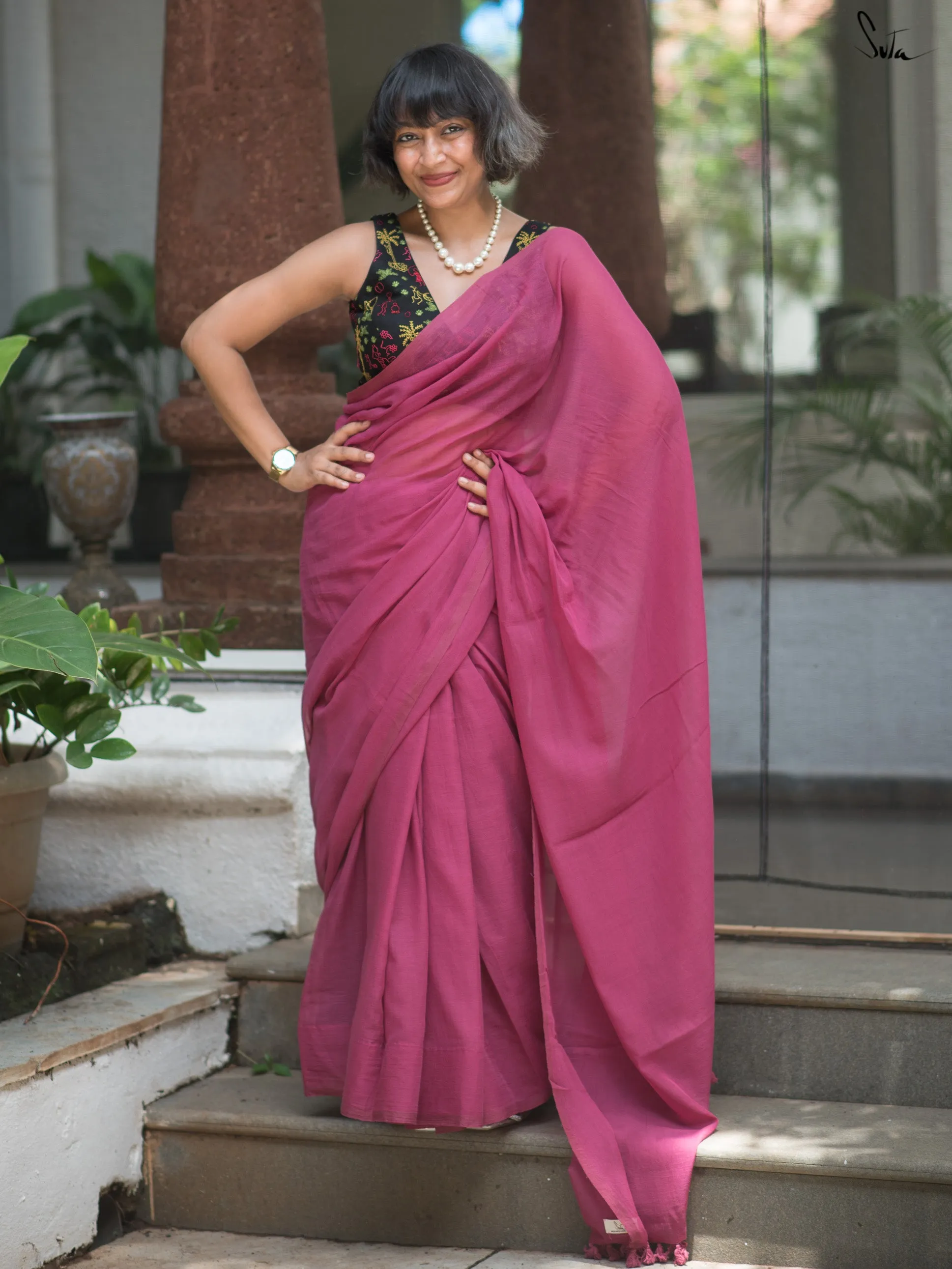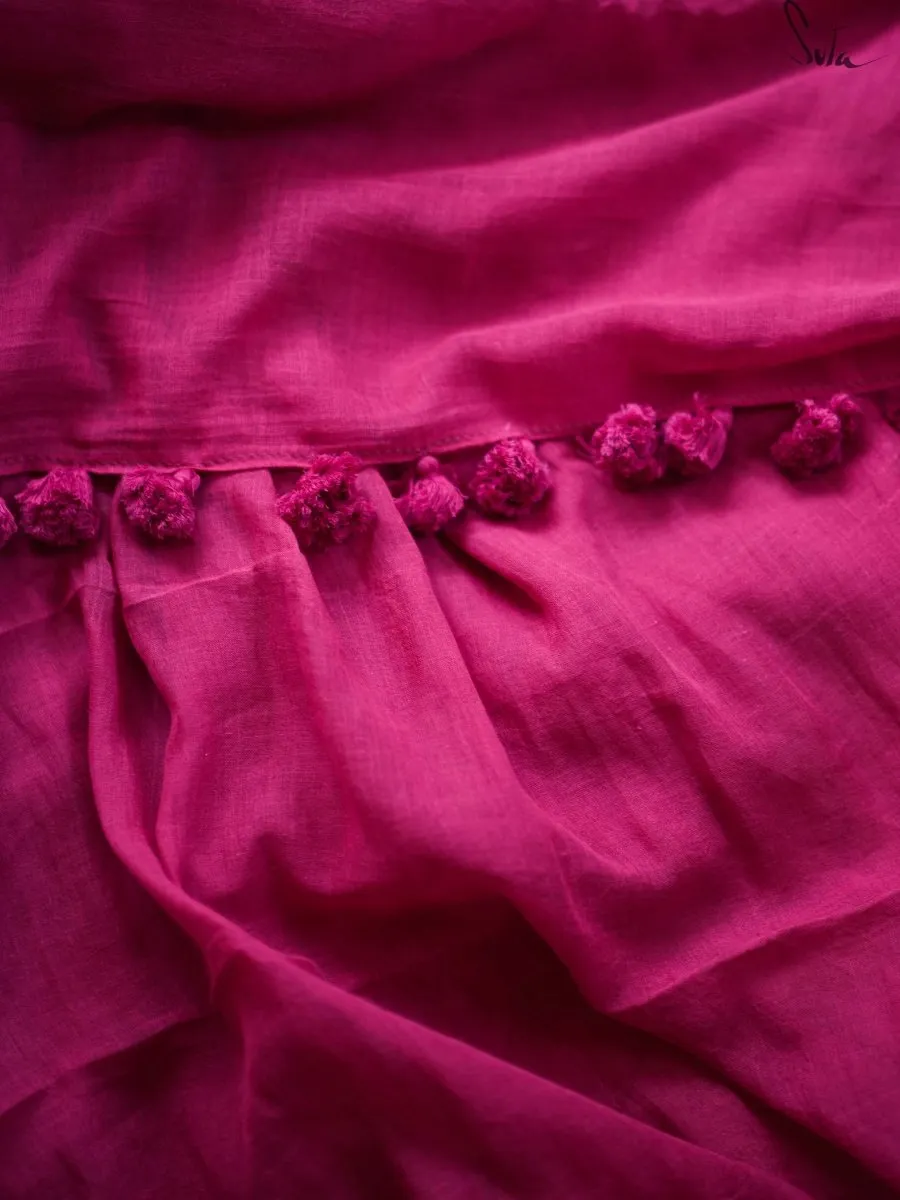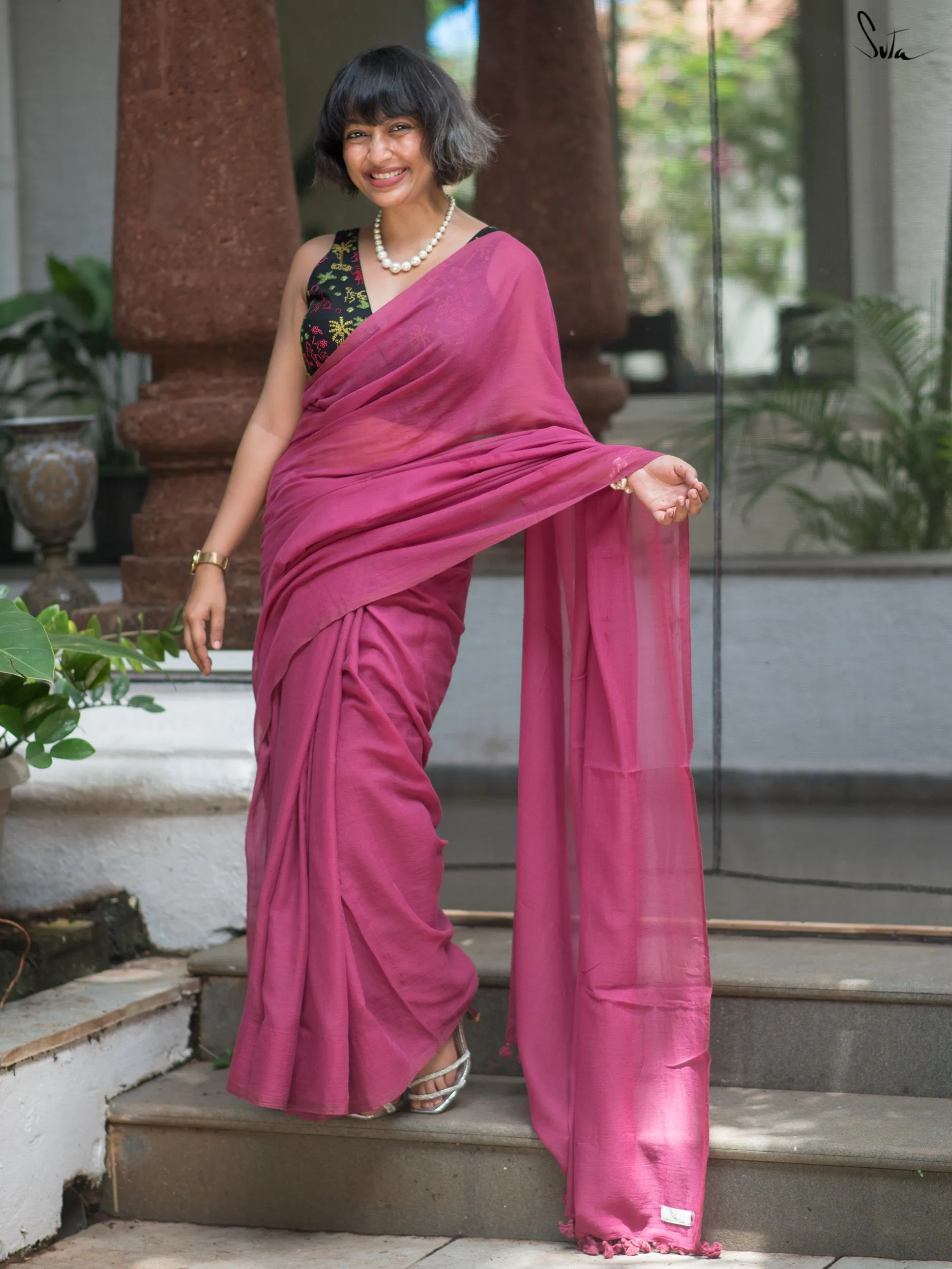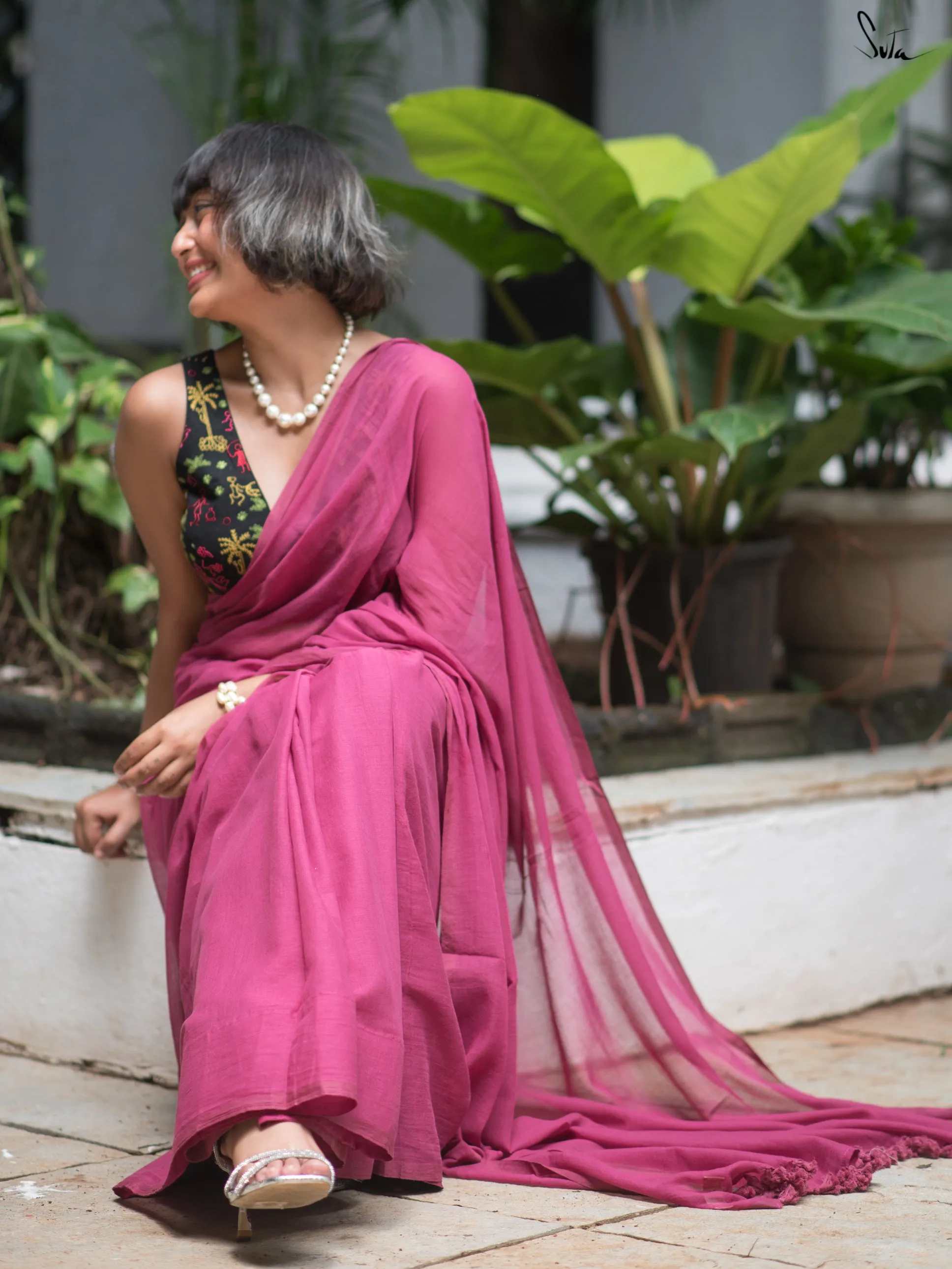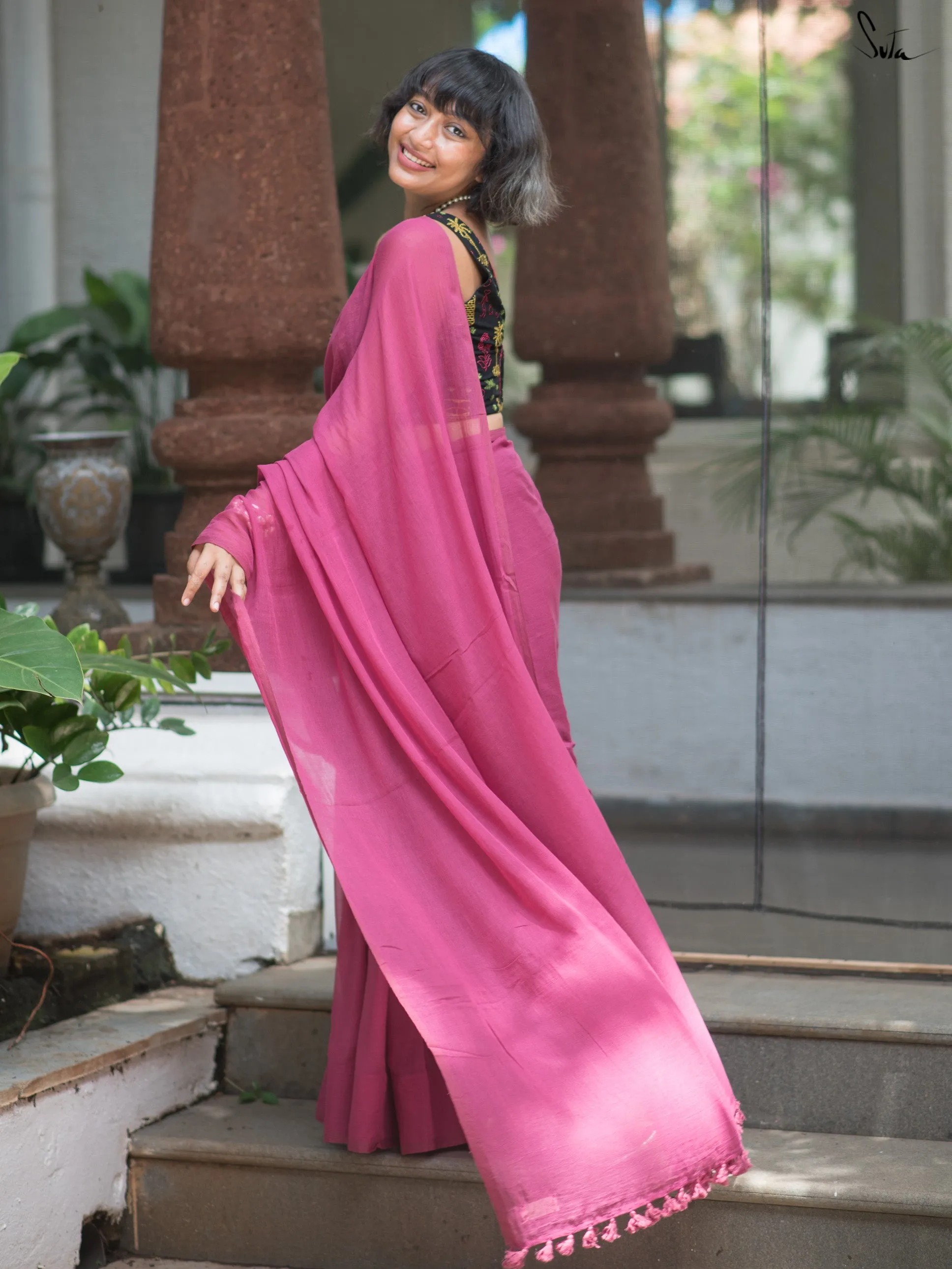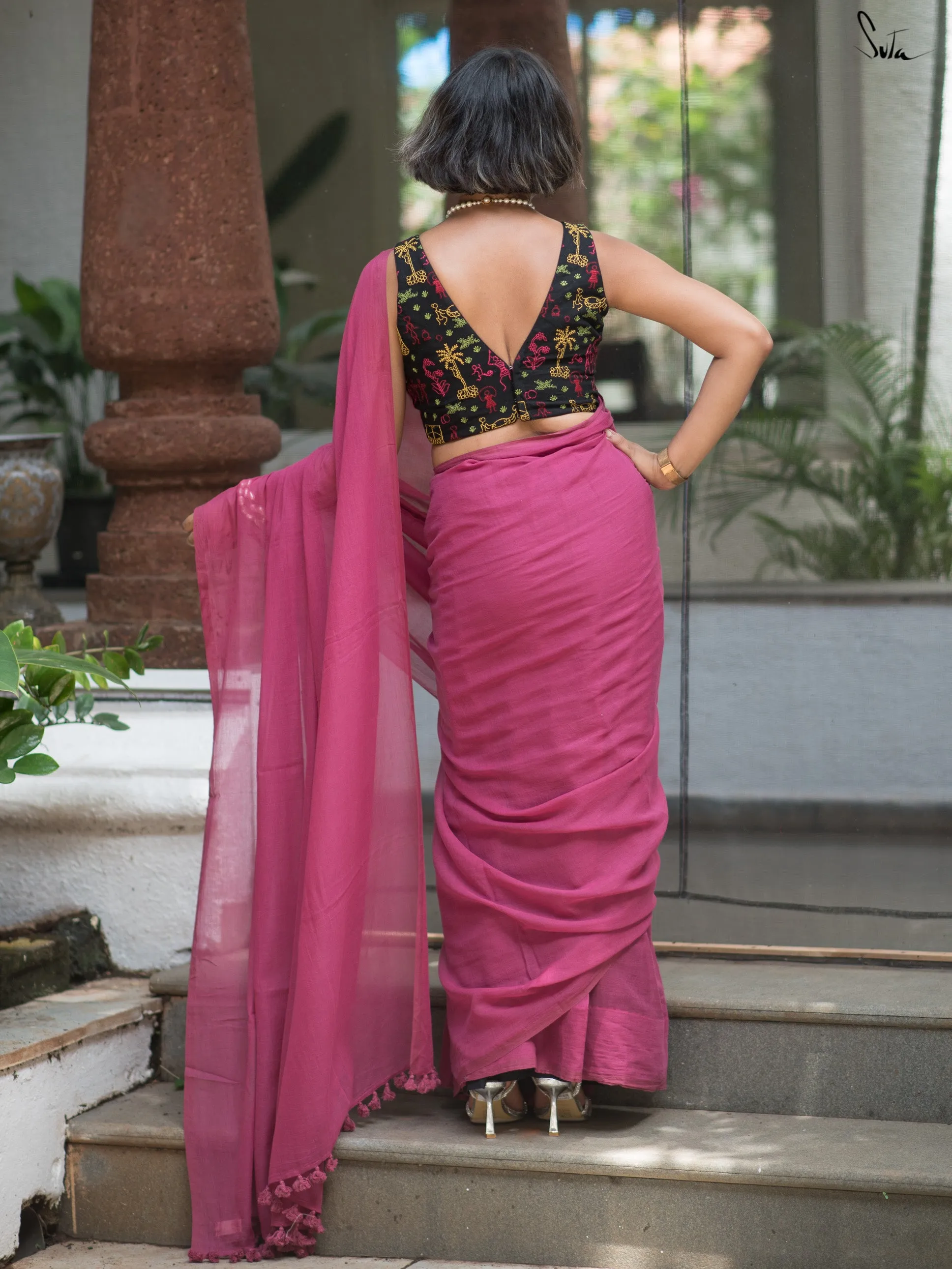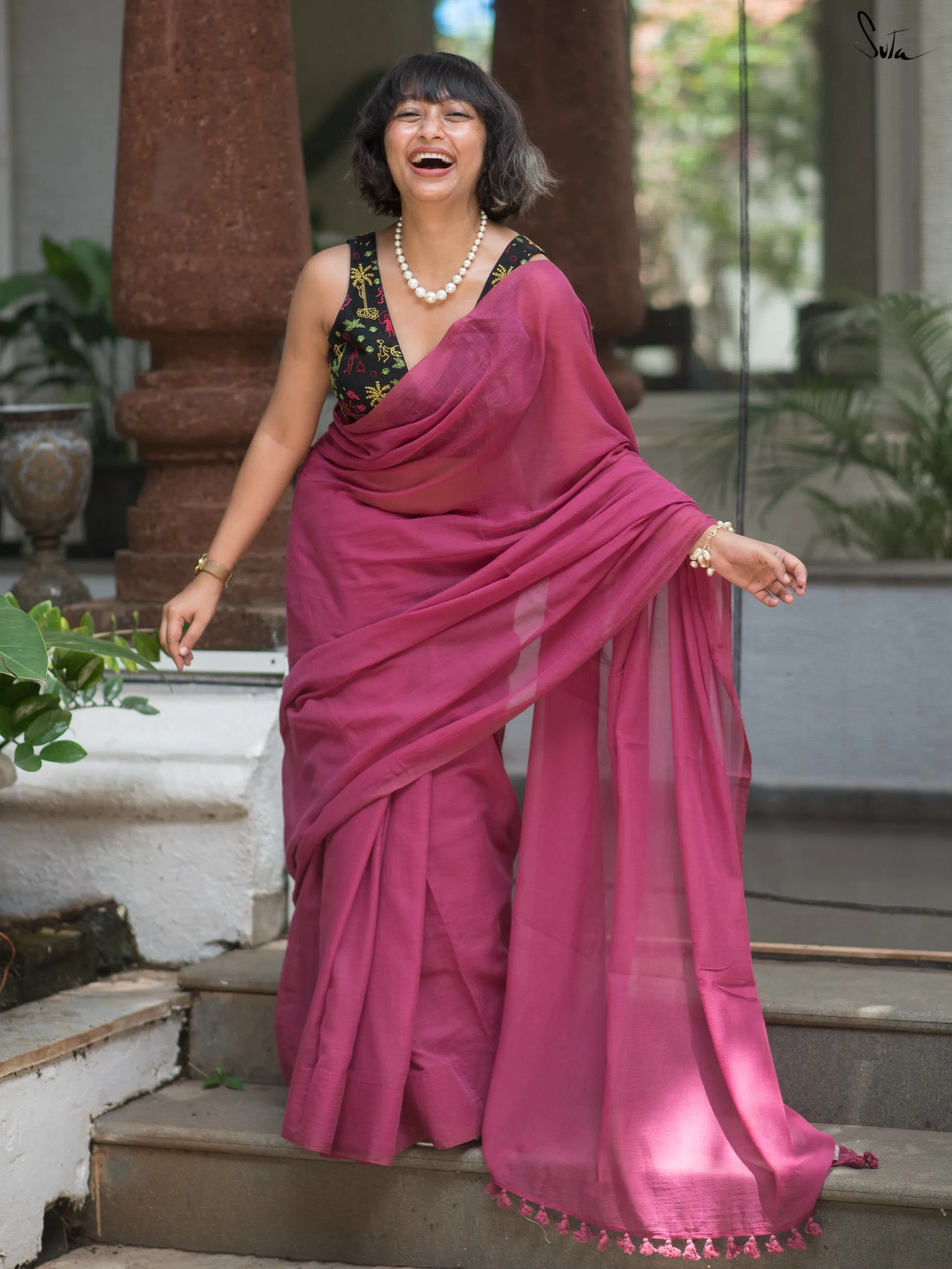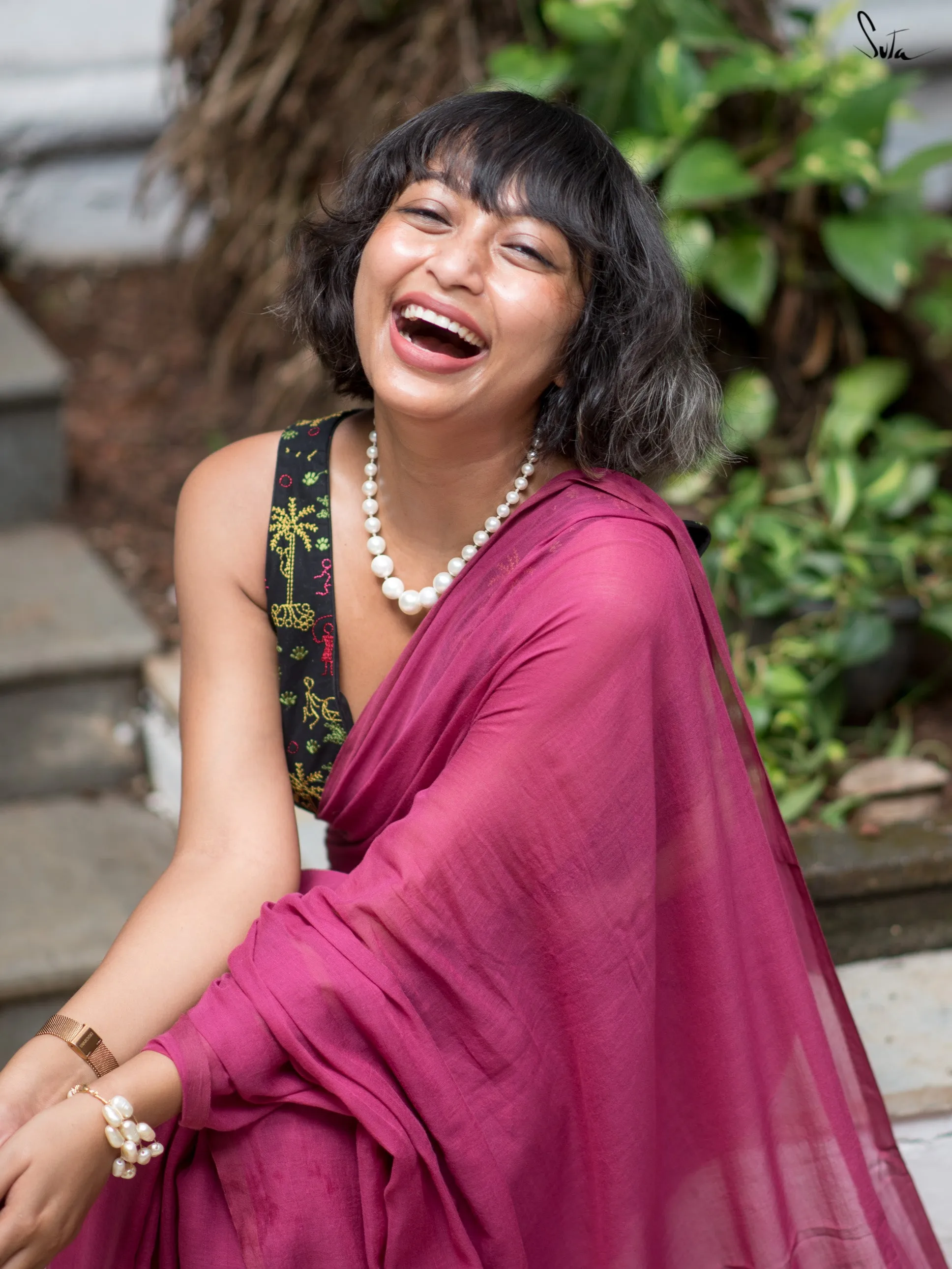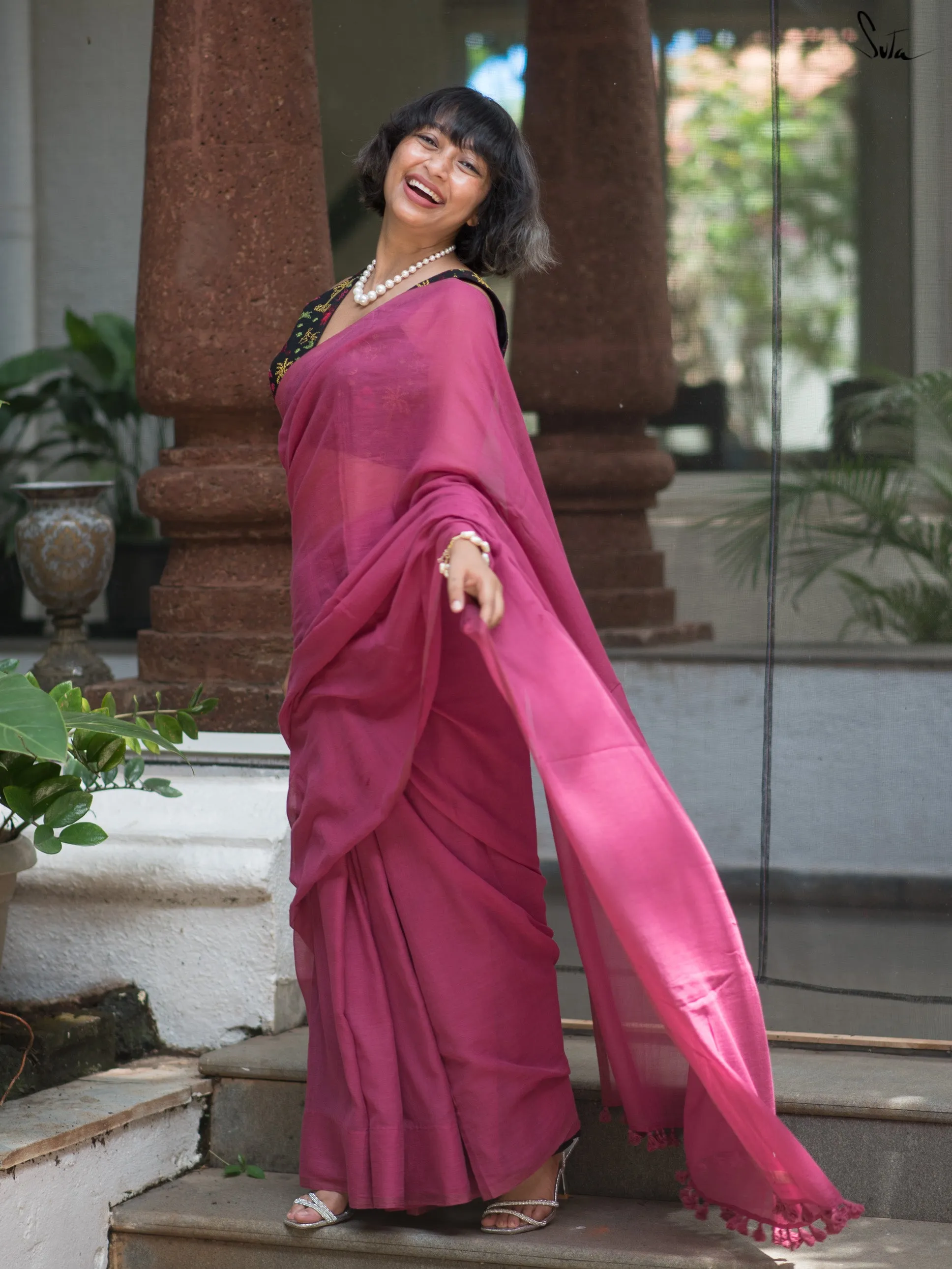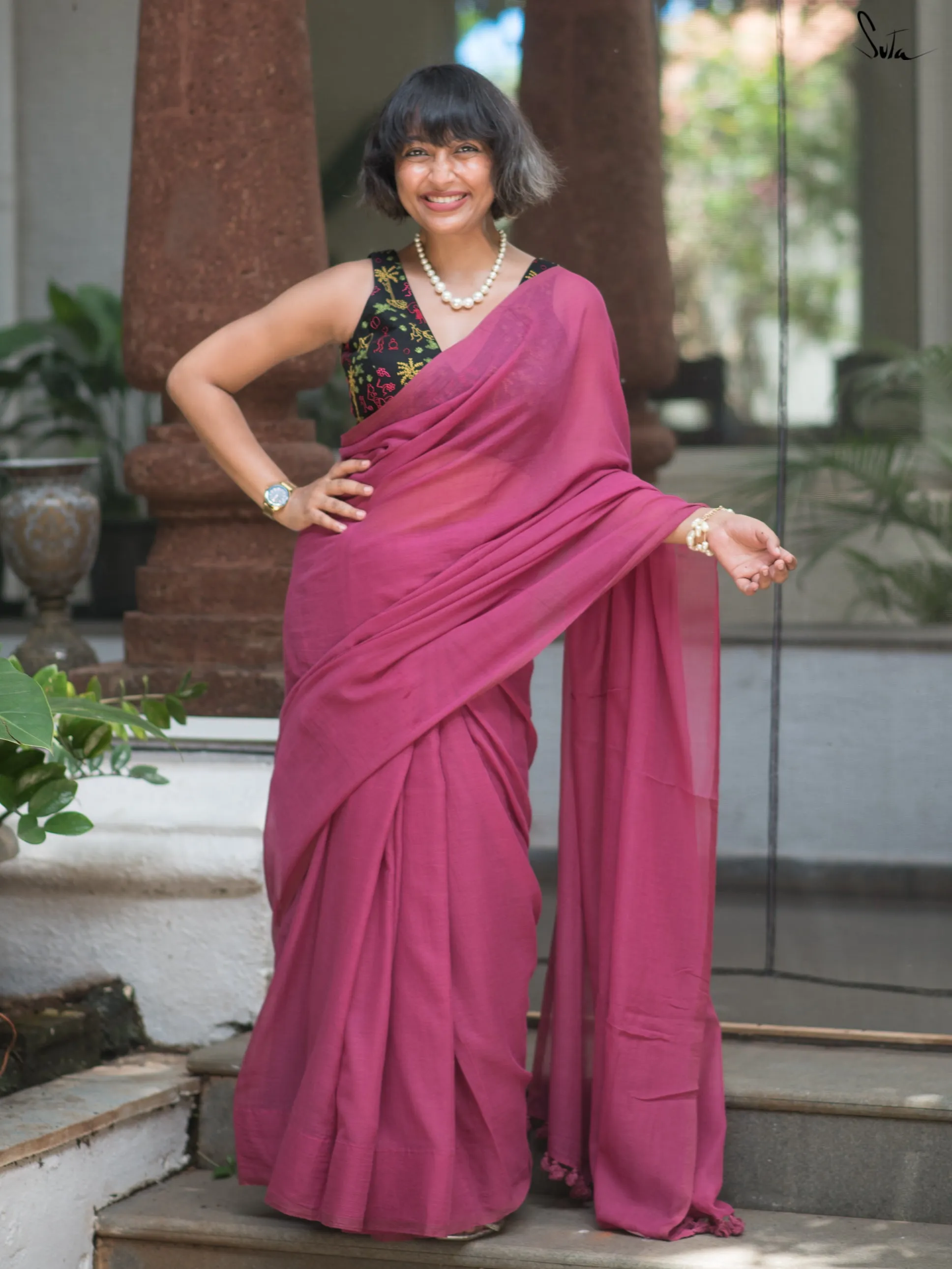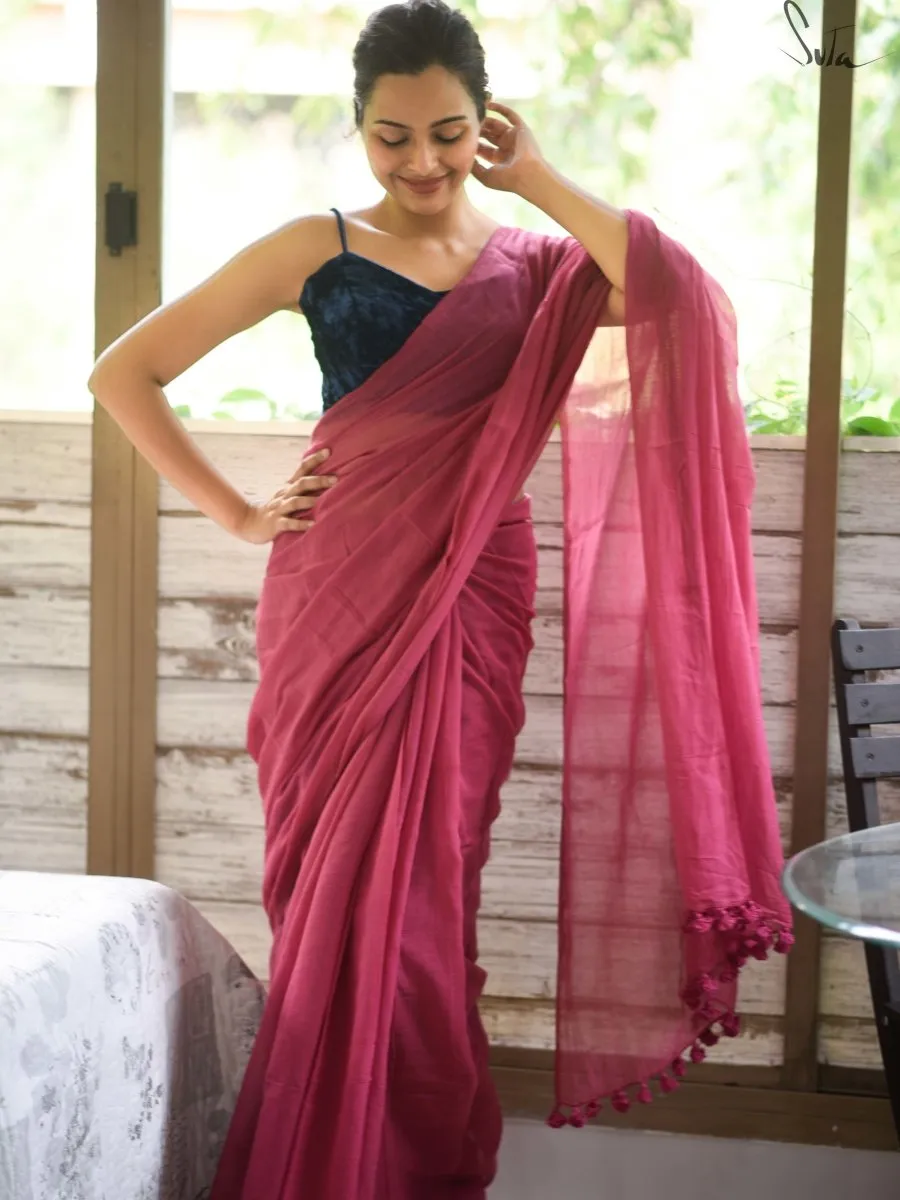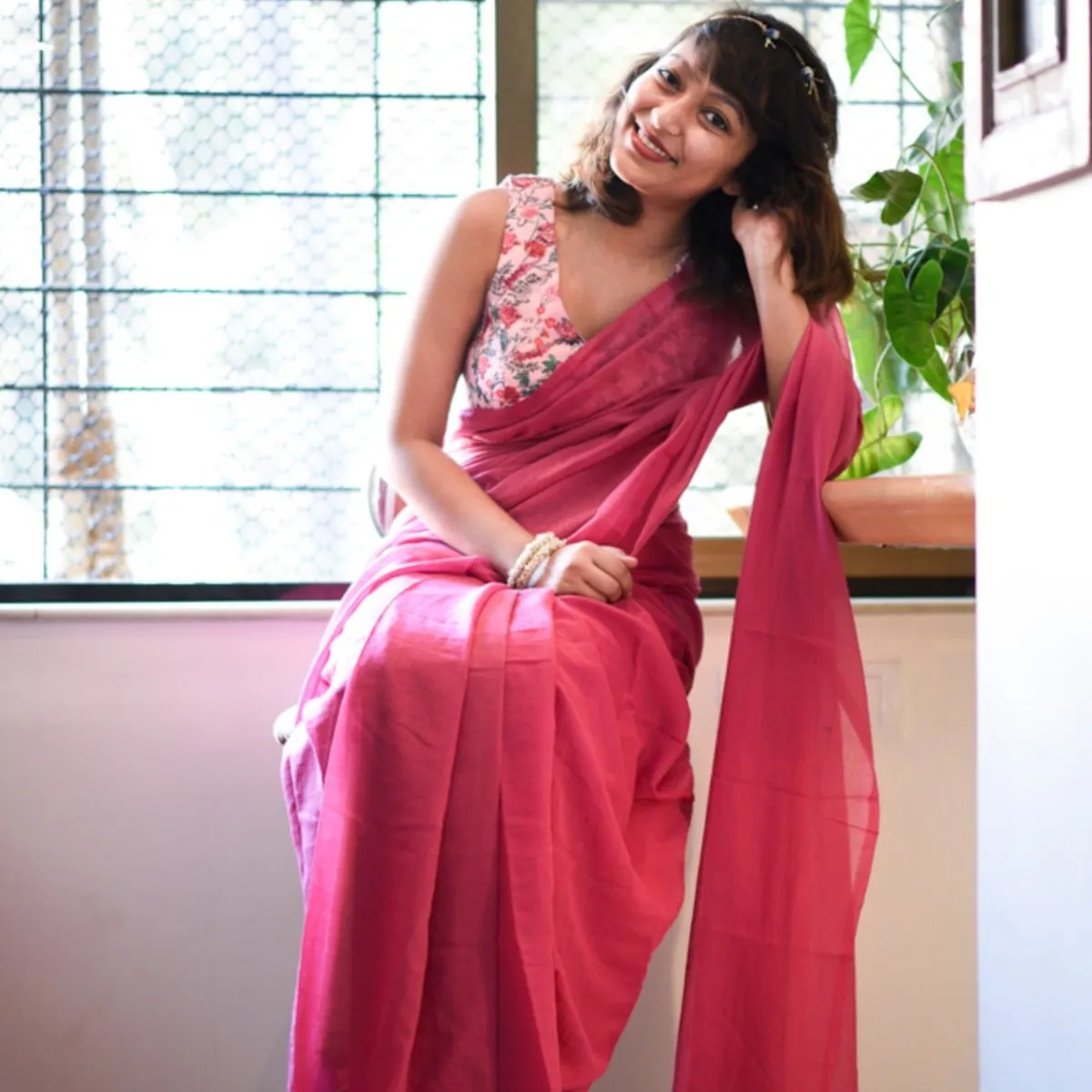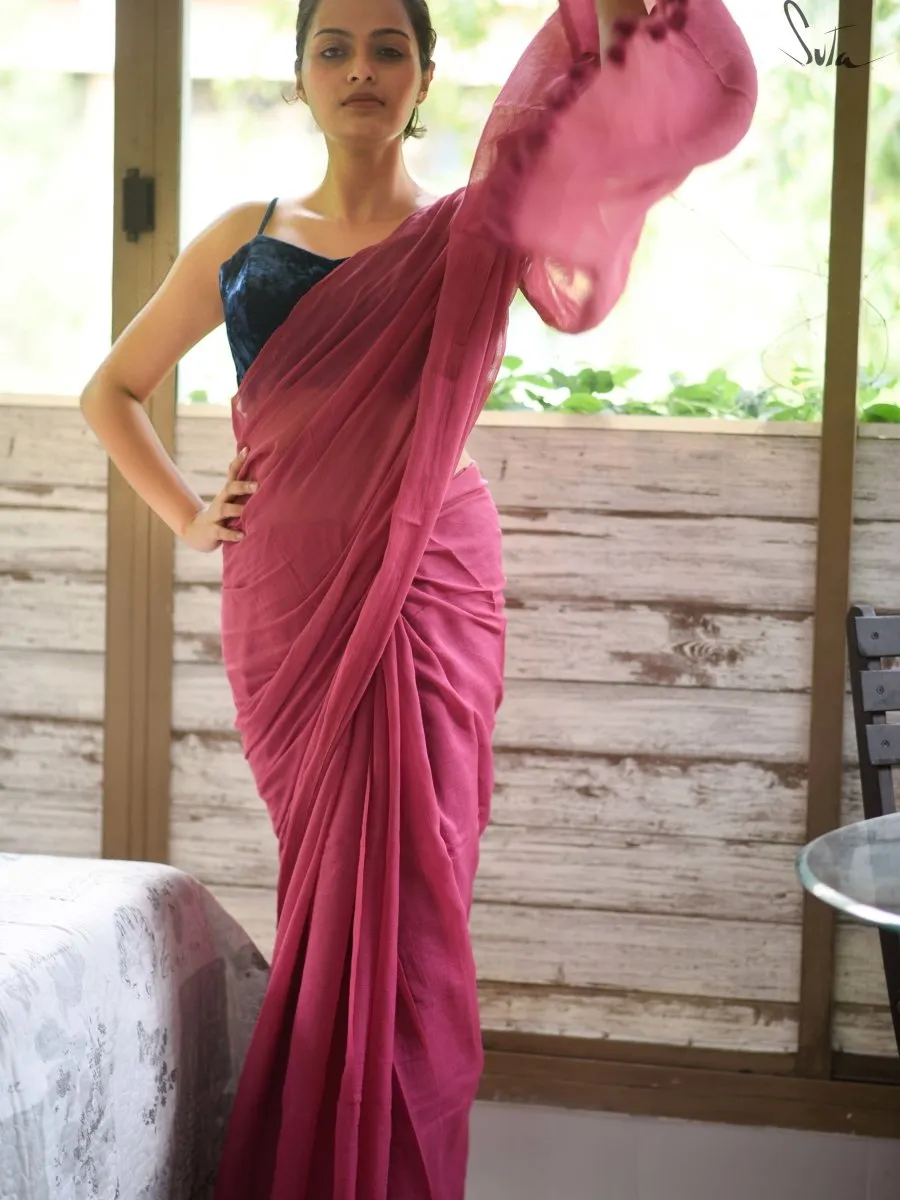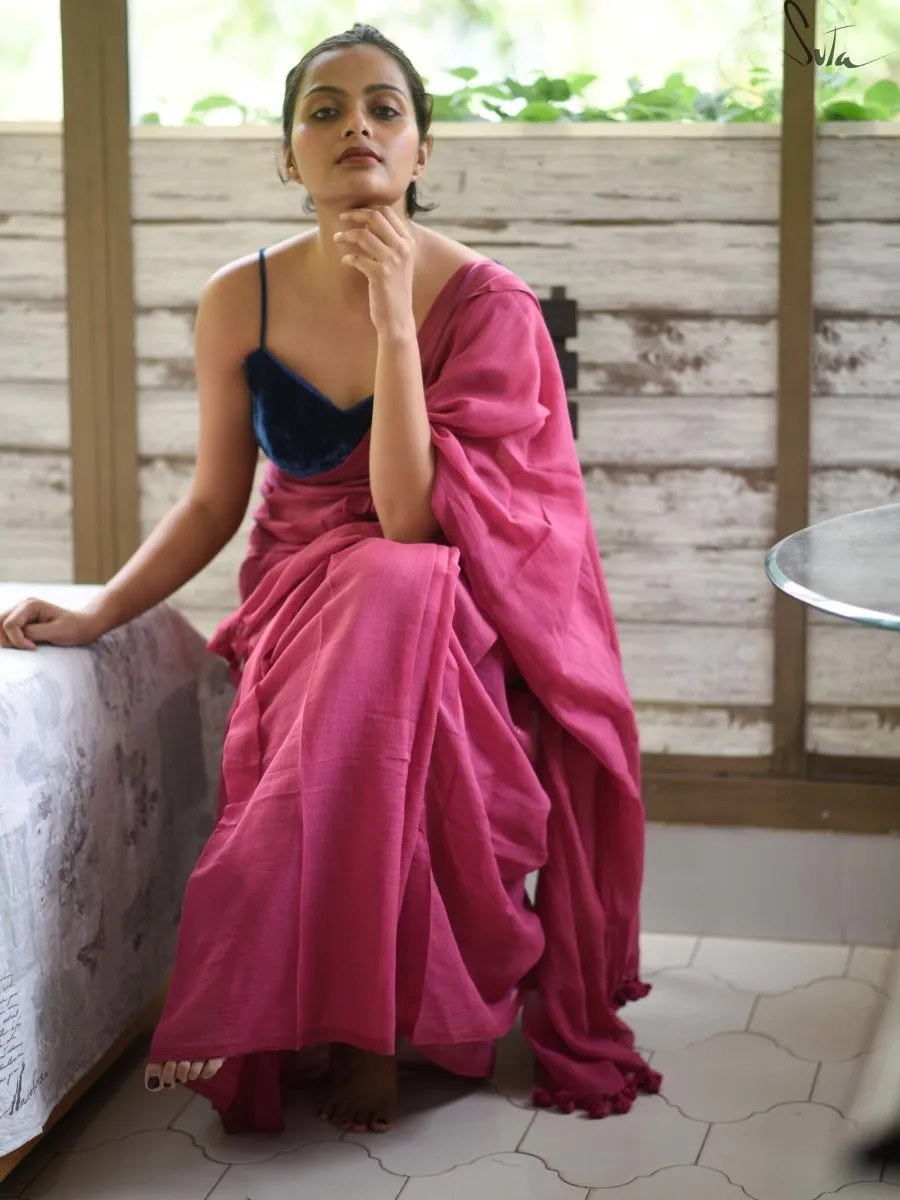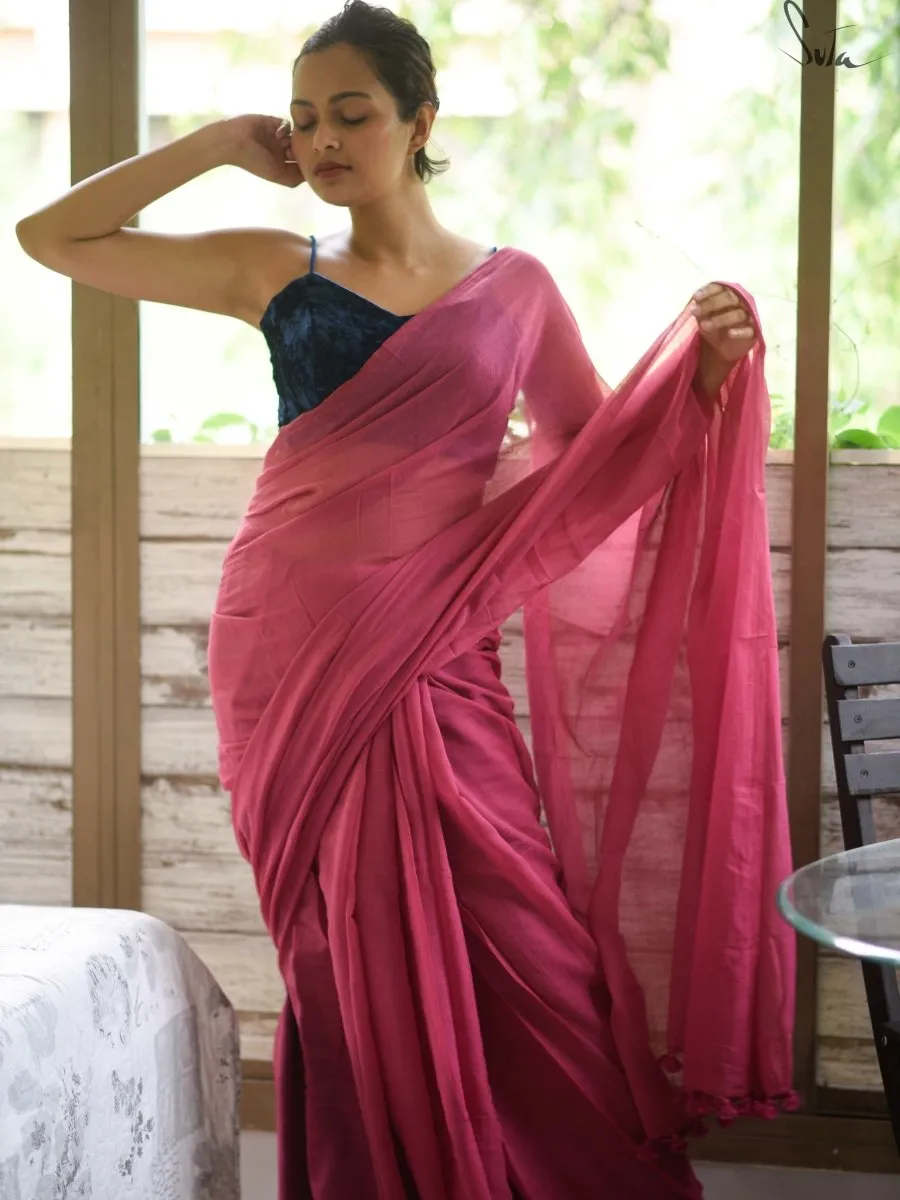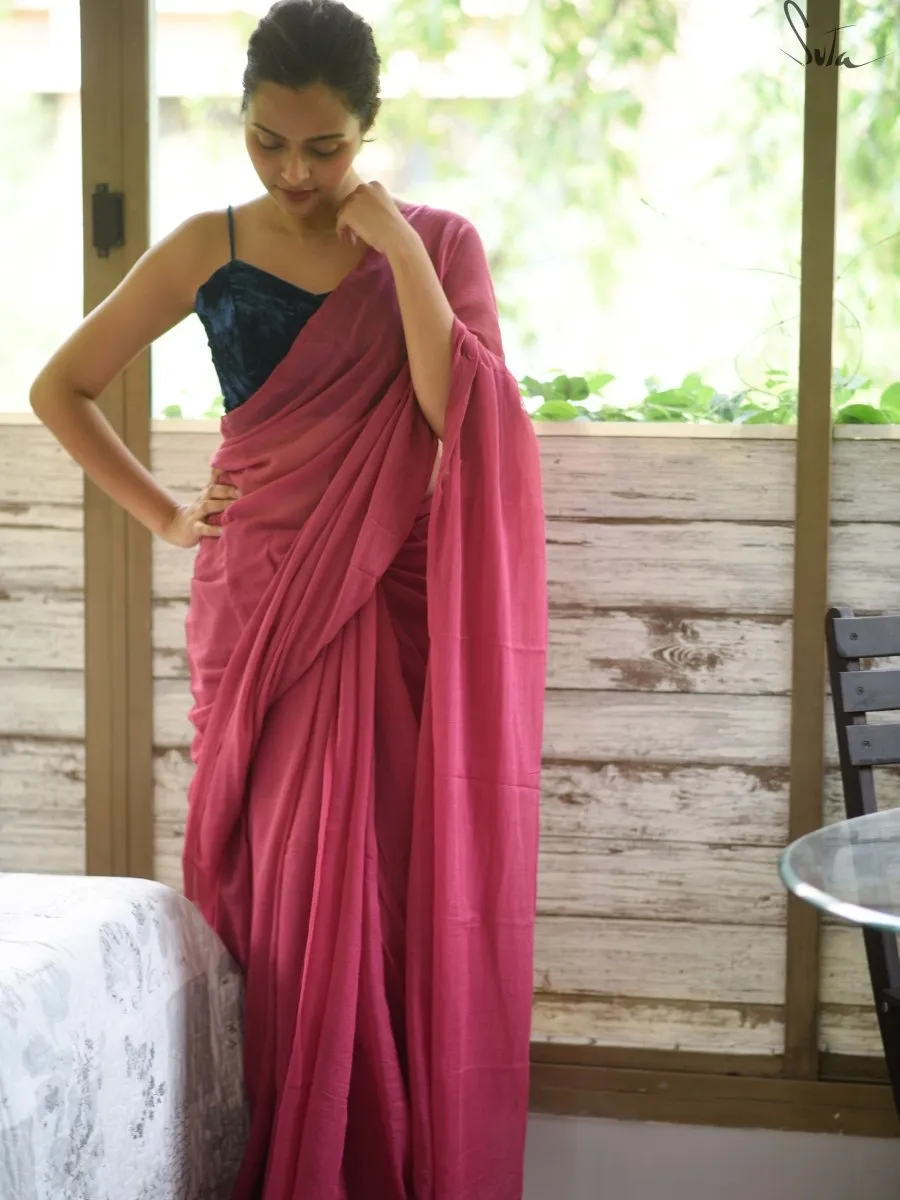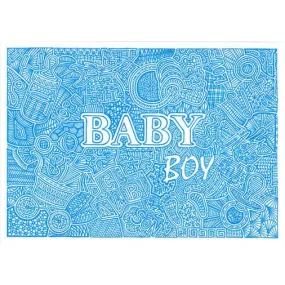Details
Length: 5.50 m (550.00 cm) ; Width: 1.19 m (119.38 cm)
Blouse Piece: No
Wash Care:
1. Hand wash separately in cold water and salt
2. Don't soak it in water for more than 5 minutes
3. Medium iron
Blouse: Su, the model is wearing a blouse from our in house collection. To view similar collection,
Fabric: Mul Cotton
Disclaimer: The pictures are clicked in daylight. Color may vary slightly from the image due to the screen brightness.
Note: Please note that this saree comes with a fall and edging.
Story
That pop of pink amidst a grey pallet of concrete structures caught her eye and she found herself gravitating towards it. As she got closer and closer, her eyes lit up. Her fingers touched the Bougainvillea flowers that seemed to reach out to her with the wind prodding them on. In that instant, she went back in time. She went back to when it was just man and nature and nothing else.
This made in heaven mul saree in pink is a must-have!
Description
The mul cotton is what we call ˜Made in Heaven at Suta. Known in West Bengal as mul mul, the fabric is what can be categorised as muslin cotton. It is believed that this fine method of weaving cotton can be traced back to even before the Indus valley civilisation. What makes this fabric special is the almost magical process of weaving it. Cotton fibres are separated and spun into strong threads. The lightest and the most delicate fibres are separated and are then spun into muslin thread. These are then woven into fabrics by skilled weavers. The history of muslin weaving is a beautiful chapter in the history of Indian textiles. The process of the yore was much more complex and involved many unique tools that look primitive but worked like magic. The upper jaw of a catfish was used to initially clean the cotton before spinning. To separate the lightest fibres, a Dhunkar (a bamboo bow) was used, which when strung in a distinctive way made the lighter fibres rise above the heavier ones. This process gave the title ˜woven air to the muslin fabric. Weavers famously wove on looms that were at ground level and operated the looms from pits dug in the ground. Even during the Mughal era, the muslin fabric was seen as a symbol of power for its finesse. History is full of anecdotes to prove the awe that the muslin fabric generated. Emperor Aurangzeb is said to have chided his daughter Zeb-un-Nisa for appearing naked in the court when in reality she had been wearing several layers of the muslin cloth! Such was the fabrics delicateness. The almost invisible fabric had made an Arab traveller in the 10th century remark that the degree of fineness is such that a garment can be drawn through a ring of a middling size. During the British colonisation and even during the Mughal rule, the art of weaving muslin took a hit as weavers were treated poorly and drought hit many of the weaving centres. As a result, today, the process of weaving has seen a lot of change. Nevertheless, the essence of it hasnt changed and the charm of the fabric still remains.




